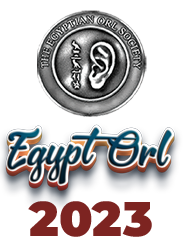ABSTRACT SUBMISSION Rules
• Abstracts be submitted for oral or poster presentation (E-Poster or Printed Poster).
• Abstracts submission via the website only.
• Each doctor may submit up to 3 abstracts as presenting author.
• Only co-authors may replace a presenting author.
• Presenting authors must be registered participants.
• Submission of an abstract acknowledges your acceptance for the abstract to be published in all Conference material.
• Abstracts must be original and must not have been published or presented at any other meeting prior to (August, 31, 2023).
• Abstracts must be submitted in English.
• Conflicts of Interest / Disclosure: Work submitted for presentation must include an acknowledgement of funding sources of commercial nature and/or consulting or holding of significant equity in a company that could be affected by the results of the study.
ABSTRACT GUIDE
Poster Dimensions and Style Guidelines
The E-poster dimensions are 1920 px height and 1080 px width.
The printed poster dimensions are 60 cm Width and 80 cm Height
Prepare a 6″ high headline strip that runs the full width of the poster. Include the title, authors, and affiliations on the strip in letters not less than 1″ high. Post a large-typed copy of your abstract in the upper left-hand corner. Be sure to note these dimensions as you will not be permitted to extend into another presenter’s space.
- Posters should be legible at a distance of five feet.
- The message should be clear and comprehensible without oral explanation.
- The following guidelines have been prepared to help improve the effectiveness of poster communication.
- Initial Sketch – Plan your poster early. Focus your attention on a few key points. Try various styles of data presentation to achieve clarity and simplicity. Does the use of color help? What needs to be expressed in words? Suggest headlines and text topics.
- Rough Layout – Enlarge your best initial sketch, keeping the dimensions in proportion to the final poster (see diagram). Ideally, the rough layout should be full size. A blackboard is a convenient place to work. Print the title and headlines. Indicate text by horizontal lines. Draw rough graphs and tables. This will give you a good idea of proportions and balance. Ask associates for comments. This is still an experimental stage.
- Text Layout – Avoid abbreviations, acronyms, and jargon. Use a consistent font throughout. It is recommended that authors use a 20 pt. font size; this makes the text legible from five feet away.
- Final Layout – The artwork is complete and the text and tables are typed, but not necessarily enlarged to full size. Now ask, is the message clear? Do the important points stand out? Is there a balance between words and illustrations? Is there spatial balance? Is the pathway through the poster clear?
- Balance – Figures and tables should cover slightly more than 50% of the poster area. If you have only a few illustrations, enlarge them. Do not omit text, but keep it brief. The poster should be comprehensible without oral explanation.
- Eye Movement – The movement (pathway) of the eye over the poster should be natural, down the columns or along the rows. Size attracts attention. Arrows, pointing hands, numbers, and letters can help clarify the sequence.
- Simplicity – Resist the temptation to overload the poster. More material may mean less communication.
- A limited supply of pushpins will be available on a first come-first served basis. Please bring additional supplies with you.
